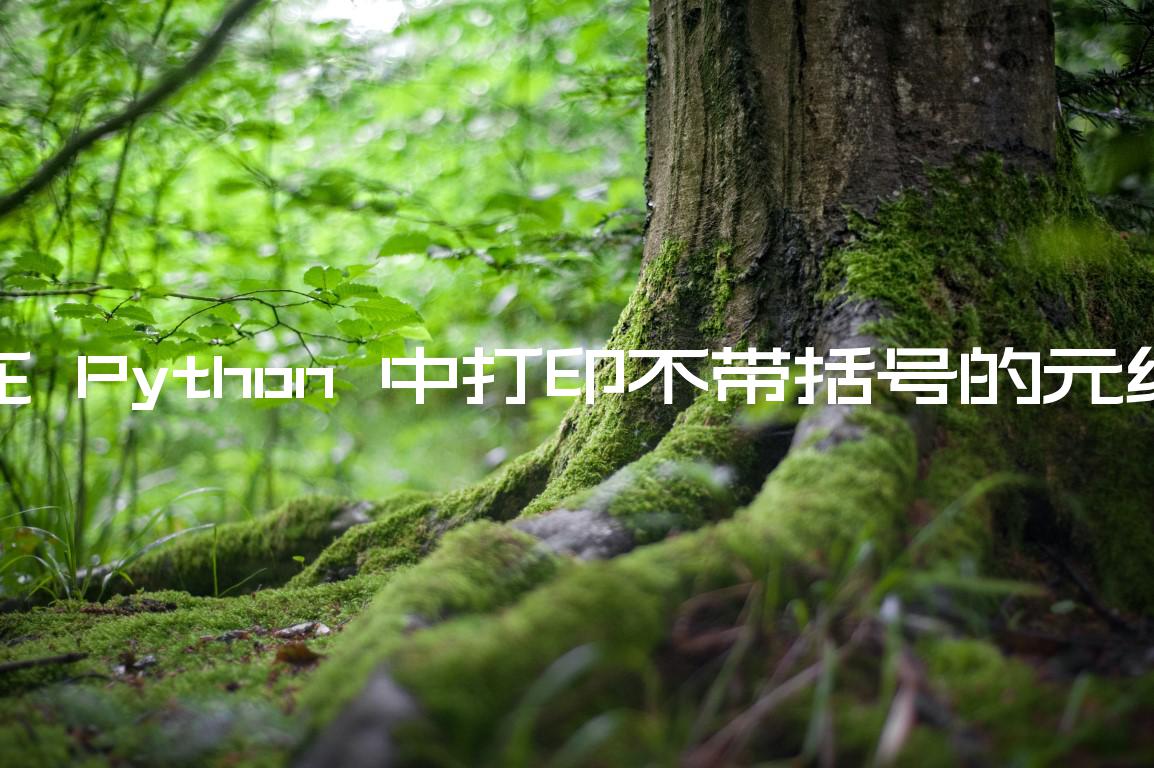在 Python 中打印不带括号的元组
Print a tuple without parentheses in Python
使用该str.join()方法打印不带括号的元组,例如
result = ','.join(my_tuple). 该str.join()方法将返回一个字符串,其中包含不带括号的元组元素,并带有逗号分隔符。
主程序
# ✅ print tuple of strings without parentheses tuple_of_str = ('one', 'two', 'three') result = ','.join(tuple_of_str) print(result) # 👉️ 'one,two,three' # ----------------------------------------- # ✅ print tuple of integers without parentheses tuple_of_int = (1, 2, 3) result = ','.join(str(item) for item in tuple_of_int) print(result) # 👉️ '1,2,3' # ----------------------------------------- # ✅ print list of tuples without brackets and parentheses list_of_tuples = [(1, 2), (3, 4), (5, 6)] result = ','.join(','.join(str(item) for item in tup) for tup in list_of_tuples) print(result) # 👉️ '1,2,3,4,5,6'
我们使用该str.join()方法打印不带括号的元组。
str.join方法将一个可迭代对象作为参数并返回一个字符串,该字符串是可迭代对象中字符串的串联。
请注意,
TypeError如果可迭代对象中有任何非字符串值,该方法将引发 a。如果您的元组包含数字或其他类型,请在调用之前将所有值转换为字符串join()。
主程序
tuple_of_int = (1, 2, 3) result = ','.join(str(item) for item in tuple_of_int) print(result) # 👉️ '1,2,3'
该示例使用生成器表达式将元组中的每个整数转换为字符串。
生成器表达式用于对每个元素执行某些操作或选择满足条件的元素子集。
调用该join()方法的字符串用作元素之间的分隔符。
主程序
my_tuple = ('one', 'two', 'three') my_str = ', '.join(my_tuple) print(my_str) # 👉️ "one, two, three"
如果您不需要分隔符而只想将可迭代的元素连接到一个字符串中,请在join()空字符串上调用该方法。
主程序
my_tuple = ('one', 'two', 'three') my_str = ''.join(my_tuple) print(my_str) # 👉️ "onetwothree"
如果您需要打印不带括号且以空格分隔的元组元素,请对str.join()包含空格的字符串调用该方法。
主程序
my_tuple = ('one', 'two', 'three') my_str = ' '.join(my_tuple) print(my_str) # 👉️ "one two three"
如果您需要打印不带方括号和圆括号的元组列表,请使用 2 次调用该str.join()方法。
主程序
list_of_tuples = [(1, 2), (3, 4), (5, 6)] result = ','.join(','.join(str(item) for item in tup) for tup in list_of_tuples) print(result) # 👉️ '1,2,3,4,5,6'
对该方法的内部调用join()连接了当前迭代的元组的项目。
我们使用str()该类将每个数字转换为字符串。
最后一步是使用该join()方法将列表中的元组连接成一个带有逗号分隔符的字符串。
